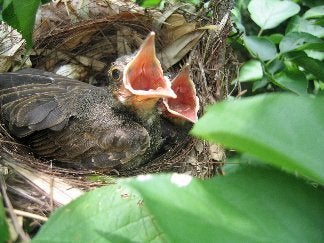
A blog is hardly the most felicitous venue for an obituary, but I'm compelled to make an exception for Rich Stallcup, the co-founder of the Point Reyes Bird Observatory (known these days as PRBO Conservation Science). Stallcup, one of the great ornithologists of his generation, died in December from leukemia at the age of 67.
I interviewed Stallcup several times when I worked as an environmental reporter for The San Francisco Chronicle. With few exceptions, any source a reporter seeks will promote, however subtly, a political or social point of view. Stallcup was one of those exceptions: he let the facts speak for themselves. He was the go-to guy for hard data on the natural world. And PRBO had the data in spades, voluminous and meticulous data, collected over four decades on the Farallon islands, the Point Reyes Peninsula, and ultimately the Sierra Nevada, the Sacramento and San Joaquin Valleys -- even Antarctica.
That data, it must be noted, seldom told a comforting story. Birds were the primary objects of study for Stallcup, but he always viewed them in a larger context: changes in avian populations, food sources and habitats implied larger - and generally, ominous -- impacts for the general environment and ultimately, human civilization.
Stallcup grew up in Oakland, and was drawn to birding as a young child. By the age of 12, he was leading Audubon Society field trips to Tomales Point. In 1961, when he was 17, he and a friend discovered that the Point Reyes Peninsula was a hotspot for "vagrants" -- songbirds that had strayed from their usual habitats. This discovery, in later years, led to the establishment of PRBO's Palomarin field station, a site that has produced seminal data on migratory songbirds of the Western Hemisphere.
In 1967, Stallcup and some fellow scientists founded PRBO; this soon followed with a field station on the Farallon Islands that remains active to this day. For four decades, Stallcup helped direct research on the Farallones, perhaps the richest marine habitat off the western continental United States. PRBO scientists now have more than forty years of data on the Farallones' seabird colonies (the largest in the United States south of Alaska), marine mammals, fisheries, and oceanic and climate conditions. That information is an invaluable trove that is continually mined by universities, regulatory agencies and the media; there is nothing comparable.
I was hardly Stallcup's close friend, but I remember him as droll, skeptical and self-effacing; it comes as no surprise that he kept his illness secret. His associates knew he wasn't in the best of health, but most were unaware of the details. He had a certain aversion for publicity, and his life somehow mimicked the existence of the birds he so loved: intensely pursued, with a graceful passing. He did not want anyone fussing over his health, and he would've abhorred any great fanfare marking his death. He would've demanded that the attention stay focused on the work. PRBO researchers are honoring that mandate.
PRBO did hold a memorial for Stallcup a couple of weeks ago. I missed it. The event fell on the last weekend of the state duck season, and I was determined to spend it in the marsh. As it turned out, the shooting was mediocre -- but the birding was superb. The ducks were out of range, but I admired the courting flights of northern pintails and American wigeon. To the southwest, vast flocks of snow geese and white-fronted geese circled in stately "grinds" over flooded rice fields. Northern harriers cruised slowly over the wetlands, while merlins, kestrels and red-shouldered hawks scanned for prey from willow snags. Marsh wrens scolded me from the tules. Driving home, I saw a bald eagle standing hock-deep in a rice field. I put the binoculars on it, and saw that it was slowly kneading a duck into the mud with its talons. I resist anthropomorphizing any animal's activity, but I swear that eagle had a big, anticipatory smile on its face.
It was the kind of day, in short, that Stallcup would've enjoyed immensely. I may have missed the eulogies honoring him -- but I was in the field, watching birds. I think he would have wanted it that way.